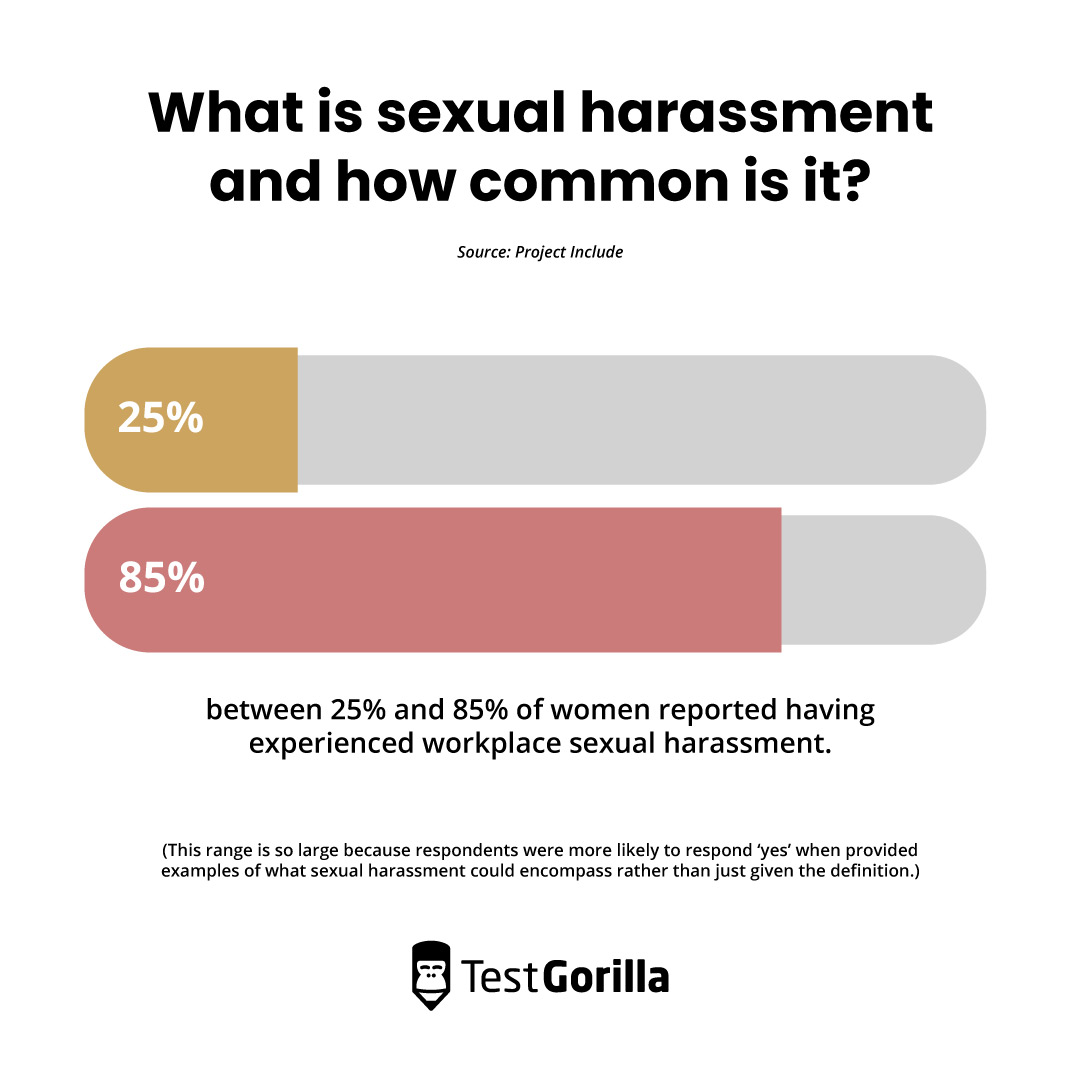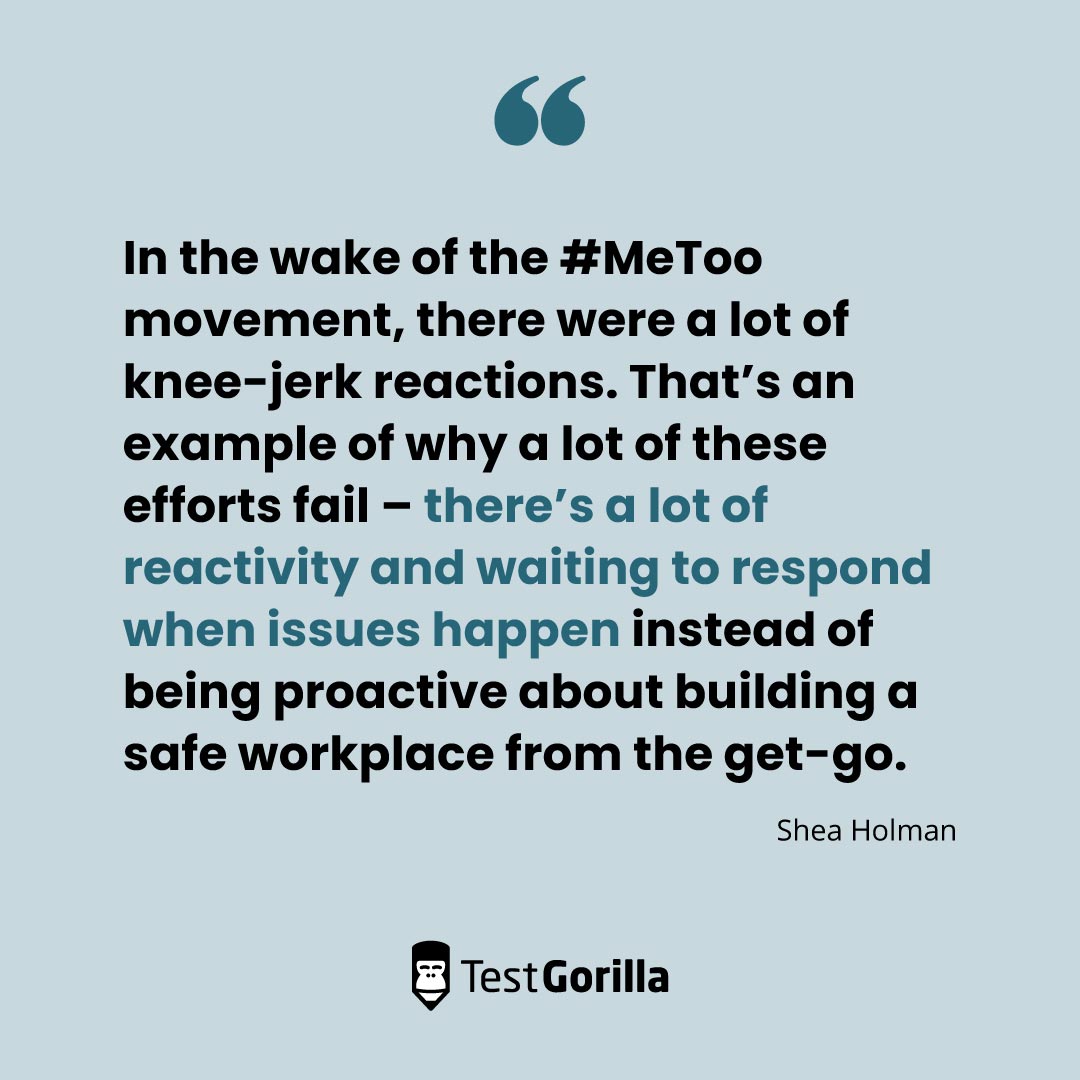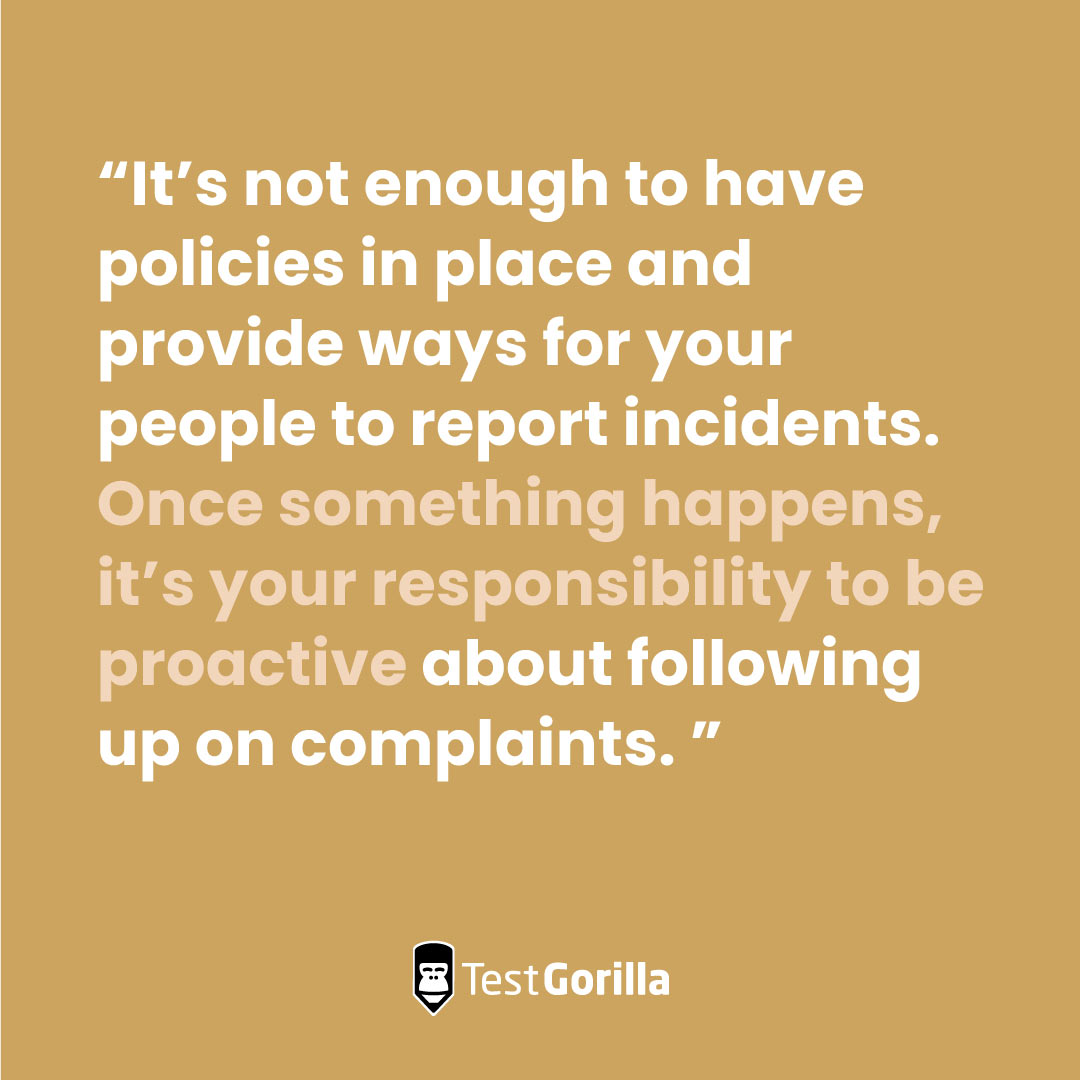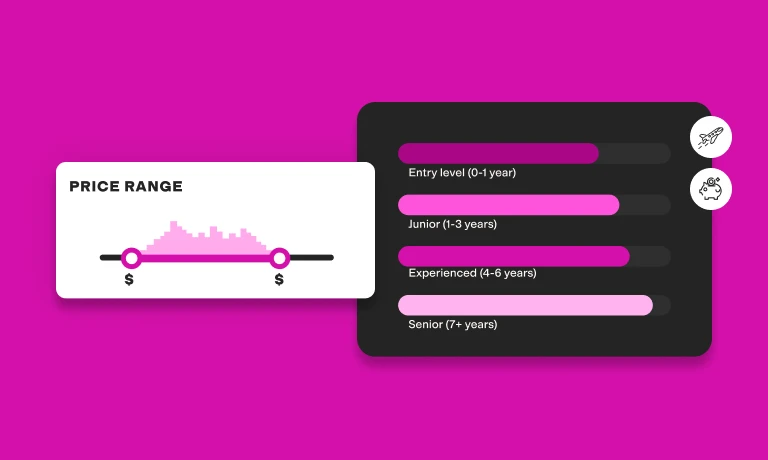It’s more common than you think – more than one in five people across the globe have experienced some form of workplace misconduct in their lifetime, and an estimated 205 million employees have been a victim of sexual harassment or violence.[1] While you’d like to believe you’ve created a safe and fair workplace, sexual harassment happens, oftentimes going unreported.[2]
From hospitality and health care to retail and finance, no industry is immune to unwanted behaviors in the workplace.
Though you may already be making efforts to prevent this issue, even companies with the best of intentions can be off the mark with their anti-harassment policies if they don’t have the right information and guidance.
That’s why this article explains:
How common sexual harassment in the workplace actually is
Why efforts to combat sexual harassment often fail
9 strategies for effectively combating sexual harassment in the workplace
To inform this article, we spoke with Shea Holman, counsel and chief operating officer at The Purple Method, an organization dedicated to addressing and preventing sexual misconduct.
You’ll see her expert insights on why sexual harassment happens and how you can prevent it on your team.
What is sexual harassment and how common is it?
The Equal Employment Opportunities Commission (EEOC) defines sexual harassment as a form of sexual discrimination that falls under Title VII of the Civil Rights Act.[3]
According to Shea Holman, there are two branches of sexual misconduct: quid pro quo and hostile work environment. The former is perhaps what most people are familiar with (for example, requesting sexual favors in exchange for a promotion). However, a hostile work environment covers a range of behaviors, including abusive conduct, unwanted compliments, workplace dating, and inappropriate jokes.
Unfortunately, sexual harassment happens more often than we think. In a reputable study conducted by the EEOC, between 25% and 85% of women reported having experienced workplace sexual harassment. (This range is so large because respondents were more likely to respond ‘yes’ when provided examples of what sexual harassment could encompass rather than just given the definition.)
It’s not just women who are susceptible to sexual harassment: While men can also be victims, people with overlapping marginalized identities, especially women and nonbinary people, are most at risk.[4]
Why do efforts to combat sexual harassment fail?
Despite many organizations being aware of the problem and putting measures in place, sexual misconduct still happens. Why, though?
According to Shea, “In the wake of the #MeToo movement, there were a lot of knee-jerk reactions. That’s an example of why a lot of these efforts fail – there’s a lot of reactivity and waiting to respond when issues happen instead of being proactive about building a safe workplace from the get-go.”
On top of a lack of proactivity, Shea points to a failure to customize solutions as a reason initiatives may fail. What works for a 30-employee company isn’t going to work for a multinational corporation, and vice versa. Or if your organization has employees at different locations, say warehouse workers and remote desk job employees, you need to offer unique solutions for your different teams.
This failure to customize solutions is one of the reasons some employees have actually faced more sexual harassment when working remotely than they did when they went to the office.[5] A 2021 report found that 38% of employees were still experiencing sexual harassment while working from home via email, video conferencing, chat apps, or phone.
Additionally, almost a quarter of workers surveyed felt that harassment continued or even got worse through digital channels. From sending inappropriate emails to sharing crude jokes and memes, workplace misconduct continues even when your employees don’t see each other face to face, primarily because companies don’t adjust their policies to match their new way of working.
Just because you implement initiatives to prevent sexual harassment doesn’t guarantee they will work. So how can you ensure you’re designing effective practices? We have a few tips.
The best insights on HR and recruitment, delivered to your inbox.
Biweekly updates. No spam. Unsubscribe any time.
9 strategies to combat sexual harassment in the workplace
As an employer, it’s your duty to create a workplace that’s safe for employees of all identities. Follow these nine strategies for preventing sexual misconduct and correctly addressing it in the event it does happen.
1. Ask your people what they need
According to Shea, “If you’re not asking your employees what they need and whether your initiatives are working, they’re going to fail.” She emphasizes the importance of “taking the pulse” on what your company needs to ensure you’re implementing initiatives that will work.
For example, imagine you set up an email as your only method for reporting incidents. If your employees want to remain anonymous, they can’t be anonymous by email. You haven't asked them their preferences, so you’ll probably get fewer people reporting incidents.
Before setting up policies and initiatives, send out a survey to your employees to get their opinions and ensure you’re designing an approach that realistically works for them.
2. Implement strong anti-harassment policies
The first step in addressing workplace sexual harassment is to reduce the number of incidents, which is why it’s so important to implement clear and customized policies. Set guidelines for what is considered sexual harassment and what the consequences are should an incident occur.
While you want to ensure you’re being fair and holding people accountable, it’s best to use a range of disciplinary methods. Shea warns that zero-tolerance policies can actually decrease reporting – victims don’t necessarily want the perpetrator to be fired, they often just want the inappropriate behavior to stop.
Therefore, it’s best to make it clear to all employees what the range of disciplinary actions could be, and avoid just resorting to a zero-tolerance approach.
3. Get an expert opinion on your policies
While you may think you know what your organization needs, it’s always good to get a second set of eyes on your initiatives. Shea recommends having an outside expert review your policies and procedures to ensure they’re up-to-date, compliant, and go above and beyond to meet your employees’ needs.
For example, her organization, The Purple Method, is dedicated to “creating safer workplaces one organization at a time” and offers policy reviews and individualized guidance to companies looking to improve their sexual harassment policies.
Even if you don’t have the resources to seek expert advice, have an outside party review your anti-harassment policies and provide feedback on where you can improve them. Your own bias may prevent you from seeing gaps in your guidelines and procedures that a third party can point out.
4. Use implicit bias and awareness training
“If you have the policies but no one knows about them, they’re ineffective,” Shea says. So be sure to have a strong anti-harassment training program for your employees, and make sure it’s customized to your organization.
What some people may consider “no big deal” or just a lighthearted joke can actually be harassment, which is why training your employees on how to identify inappropriate behavior is essential to creating a workplace where everyone feels safe and comfortable.
Because sexual harassment is inherently a diversity issue, another area of training that can be helpful for combatting harassment is implicit bias training. For this to be effective, though, it’s essential you make DE&I training an ongoing effort rather than a one-and-done quick fix. Also, be sure to get buy-in from leadership, as they’re the ones who need to establish training as a priority for your organization.
5. Make it easy for victims to report it
“Make sure people have as many ways as possible to speak up, and make sure they feel comfortable accessing those channels,” Shea says. “If you’re proactive, there should be reports being made and corrective action happening.”
So if all of a sudden the number of incidents in your workplace goes up, don’t be alarmed – that’s a sign your reporting channels are working and employees feel comfortable speaking up about incidents.
The key here is to have multiple channels for reporting, making it as easy as possible for your people to notify you of an incident if it occurs. It’s also essential to offer an anonymous reporting channel, as some employees may feel more comfortable reporting an incident if they don’t have to disclose their identity.
6. Act promptly and decisively
It’s not enough to have policies in place and provide ways for your people to report incidents. Once something happens, it’s your responsibility to be proactive about following up on complaints.
“Make sure your investigation procedures are timely and thorough,” Shea says. “Also ensure you’re constantly communicating with the employees involved so they know it’s being taken seriously and are aware of the outcome.”
Empower your leaders to set standards and enforce policies strictly, which creates a sense of trust and sets the tone for other employees to know that if they report an incident, it will be regarded seriously and measures will be taken.
7. Create a safe physical and online environment
As we mentioned, just because work has gone online doesn’t mean sexual harassment has decreased. So whether you’re an in-person, hybrid, or remote team, you need to create an environment where all your employees feel safe.
First off, establish psychological safety by creating employee resource groups and encouraging your people to speak up. This helps foster trust and makes people feel more comfortable reporting incidents without fearing the risk of retaliation.
Additionally, make sure there are no spaces, online or in your office, where it’s easy for harassment to occur. Plus, be aware that sexual harassment can occur outside of working hours, such as at work-sponsored social events or during work-related travel. Take measures, like creating alcohol policies, to minimize risk in these situations.
8. Improve diversity at your organization
Ultimately, workplace sexual harassment is a DE&I issue, and when you see it as such, you can do a better job of preventing it from happening.
This is because by building a more diverse team, you can ensure all your employees have allies they feel comfortable going to if they need to report an incident. For example, your Black women employees will likely feel safer talking about inappropriate behavior they experienced to a Black woman HR manager than they would if they had to disclose this information to a White man, who might not understand their perspective or be as likely to empathize with them.
To improve diversity among your workforce, use skills-based hiring to remove bias from your hiring process and recruit employees, especially among leadership, from a variety of backgrounds and identities. By focusing on talent assessments instead of resumes, you can remove unconscious bias from your recruitment process and build a more inclusive organization.
9. Use talent assessments to develop soft skills
Finally, foster qualities in your leaders that will help them respond correctly when issues arise and build the trust needed for victims to feel safe reporting incidents. For example, ensure your human resources team is equipped to deal with sensitive situations with an HR management test.
Additionally, you can test your managers by using a leadership test to evaluate their capacity to sensitively manage difficult situations. You can also assess their communication skills to ensure they’re able to both actively listen as well as respond appropriately.
Personality tests like the Big 5 (OCEAN) test also will tell you if your leaders possess traits like openness, conscientiousness, extroversion, agreeableness, and emotional stability. These will be put to the test when dealing with sexual harassment complaints and other sensitive matters so it’s important to hire for them.
Other personality tests you can use include:
16 personalities to understand how they navigate issues
Enneagram to uncover core beliefs
DISC to reveal how they express emotions
By using talent assessments, you can check where your leaders’ and HR managers’ soft skills are at and evaluate whether they need any additional training to be better equipped to combat workplace sexual harassment.
Do your part to prevent sexual harassment in your organization
Sexual harassment happens more than we think, but it doesn’t have to be a necessary evil for your workplace. You can prevent misconduct from happening by taking the right measures, like:
Asking your people what they need
Implementing strong anti-harassment policies
Getting an expert opinion on your policies
Using implicit bias and awareness training
Making it easy for victims to report
Acting promptly and decisively
Creating a safe physical and online environment
Using talent assessments to develop soft skills
Additionally, by seeing sexual harassment as a DE&I issue and hiring a more diverse company, you’ll create a safer, more inclusive organization all around. Having a diverse workforce can transform your business in more ways than one, which is why you should use skills-based hiring to remove bias from your hiring process. This way, you can build a team that feels more comfortable at work and wants to stick around.
Build a safer, more inclusive organization. Skills-based hiring helps you hire employees from all backgrounds, making your workplace more inclusive. Download the 2022 State of Skills-Based Hiring report to learn more |
|---|
Sources
1. “Experiences of violence and harassment at work: A global first survey.” (2022). International Labour Organization. Retrieved August 3, 2023. https://www.ilo.org/wcmsp5/groups/public/---dgreports/---dcomm/documents/publication/wcms_863095.pdf
2. “Why is Workplace Sexual Harassment Underreported? The Value of Outside Options Amid the Threat of Retaliation.” (2021). National Bureau of Economic Research. Retrieved August 3, 2023. https://www.nber.org/papers/w29248
3. “Fact Sheet: Sexual Harassment Discrimination.” (1997). U.S. Equal Employment Opportunity Commission. Retrieved August 3, 2023. https://www.eeoc.gov/laws/guidance/fact-sheet-sexual-harassment-discrimination
4. “Remote work since Covid-19 is exacerbating harm. What companies need to know and do.” (2021). Project Include. Retrieved August 3, 2023. https://projectinclude.org/assets/pdf/Project-Include-Harassment-Report-0321-F3.pdf
5. “Workplace Harassment in the Age of Remote Work.” (2021). The New York Times. Retrieved August 3, 2023. https://www.nytimes.com/2021/06/08/us/workplace-harassment-remote-work.html
Related posts
You've scrolled this far
Why not try TestGorilla for free, and see what happens when you put skills first.





















